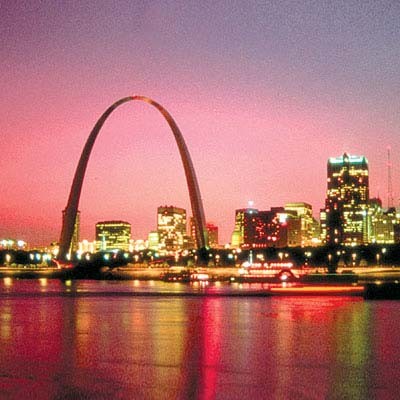Known as the “Gateway City,” St. Louis is famous for its landmark arch, Budweiser beer and beloved Cardinals baseball team, or “Redbirds” if you’re talking Cards ball with a local.
But “The Lou” is also a town of neighborhoods and flavors, from its signature foods—a trademark style of barbecue, and toasted ravioli from The Hill, where Italian-Americans operate a multitude of restaurants—to the taste of its music, irrigated by the Mighty Mississippi, germinating American icons such as Scott Joplin, Tina Turner and Chuck Berry.
Groups visiting St. Louis will of course want to experience the “expected,” such as the iconic Gateway Arch, with a ride on its retro tram capsules 630 feet to the top for a panoramic view of the city. Just below the arch, however, is the Museum of Westward Expansion, which offers the capacity to serve 1,000 for a cocktail party or theme dinner.
Indeed, scratching below the surface is what groups should do here to satisfy their itch for the out-of-the-ordinary.
One eclectic attraction is The City Museum, which is located in a former shoe manufacturing plant and assembled from a collection of recycled materials from demolished buildings.
“The building was a big shoe factory, so all of the shoes went down on rollers,” says Julie Greenspoon-Kelly, president of DMC Destination St. Louis (www.destinationstlouis.com). “[The owner] took all the rollers and made it a two-story slide, so all the adults go on it during parties. It’s just so odd and unique. Attendees and meeting planners are so sophisticated these days—they’ve seen everything—but they come in and say, ‘I’ve never seen anything like this before,’ and they certainly didn’t expect it in St. Louis.”
To give groups some of the local flavor, Destination St. Louis often stages a “St. Louis Through the Ages” party, with music ranging from Dixieland to rhythm and blues, and carrying an historical theme encompassing the city’s founding in 1764 on through the Lewis and Clark Corps of Discovery expedition, the 1904 World’s Fair, and its more recent arts and cultural offerings.
Central to St. Louis is Forest Park, which at nearly 1,300 acres is about 500 acres larger than Manhattan’s Central Park. Many of the city’s top visitor attractions are located here, including the Saint Louis Zoo, the Science Center, the Missouri History Museum, the Muny Opera, and the Saint Louis Art Museum.
For groups with some money to throw around, the art museum is a prime facility.
“It’s quite costly to rent,” Greenspoon-Kelly says. “There’s an atrium, but you have to become a corporate partner—for $10,000—to utilize it. It’s one of the only buildings left from the 1904 World’s Fair, and we’ll often take groups in horse-drawn carriages around the park.”
Other interesting off-site options include events in private mansions, such as the Magic Chef mansion.
Downtown’s Laclede’s Landing, the nightlife and dining hub of St. Louis, features venues housed in 19th century buildings rising from cobblestone streets, and is open till 3 a.m. on weekends.
For all its unexpected quirkiness, St. Louis remains a city shaped by the philanthropic largess of its major corporations, such as Anheuser-Busch and Boeing, along with being reasonably priced and centrally located with good airlift.
Of course, oddness can always abound, even at the airport.
“For big groups, we can have guys at the airport doing a dueling piano act.” Greenspoon-Kelly offers.







